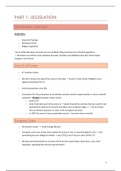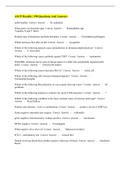Samenvatting
Samenvatting proefdierkunde 2
- Vak
- Instelling
Zeer uitgebreide samenvatting van alle geziene hoorcollege's van proefdierkunde 2. Omvat alles wat de prof heeft gezegd in de les en benadrukt wat ze belangrijk vindt voor het examen. Behaalde resultaat 19/20.
[Meer zien]





